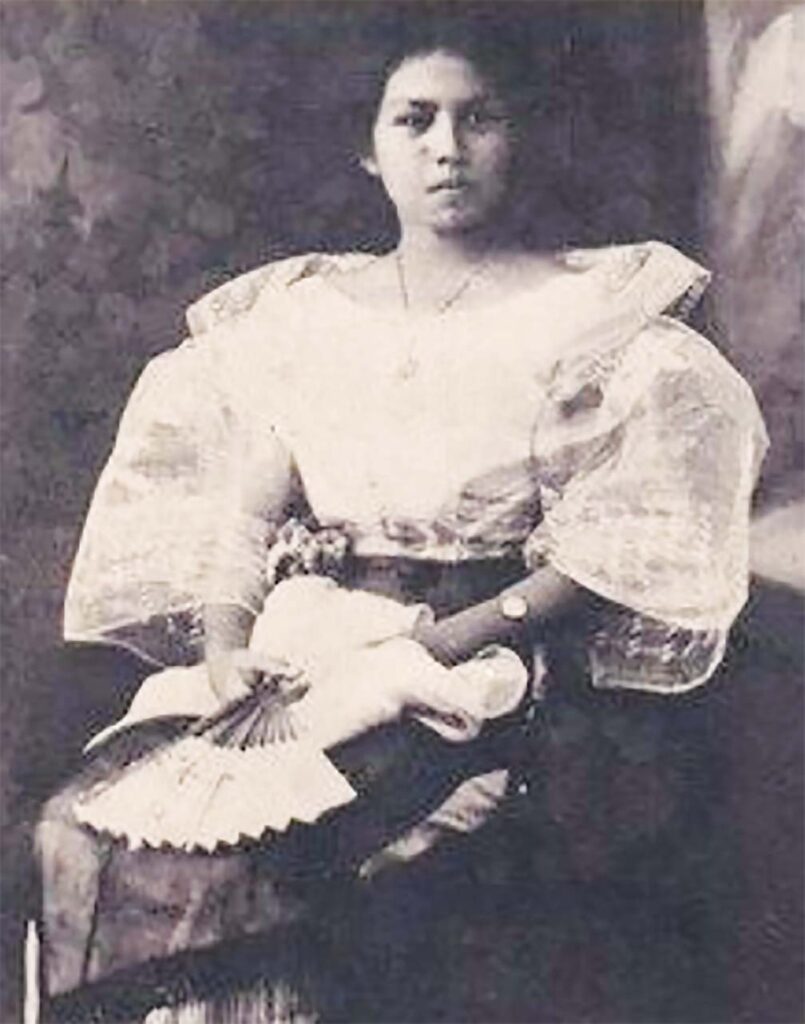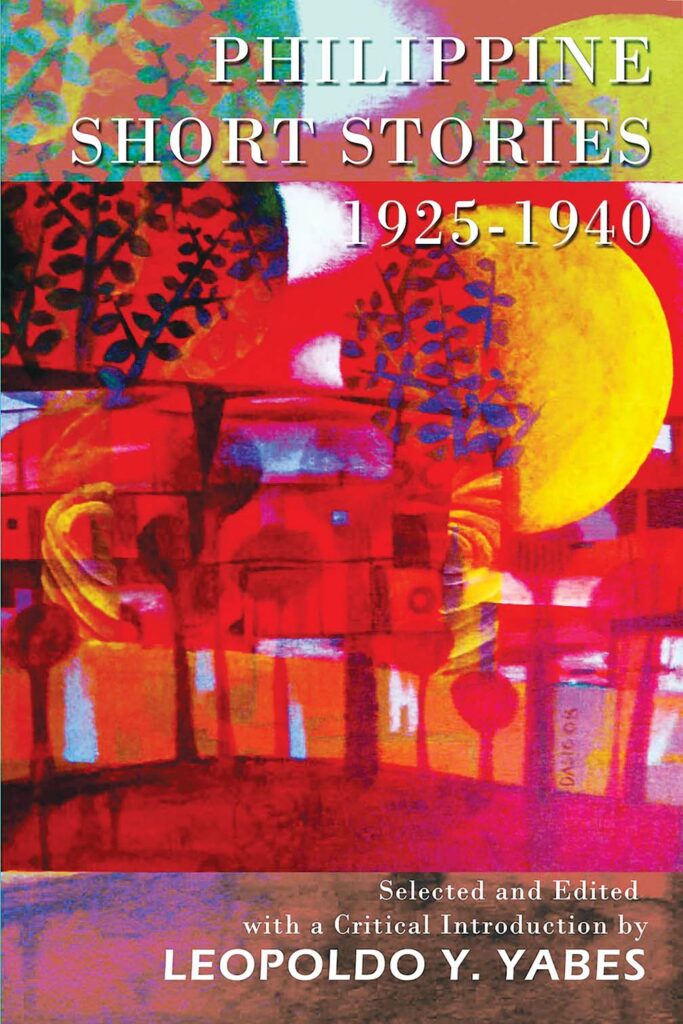Philippine history boiled, bubbled, and spewed trouble in the years that marked the birth and growing up years of Paz Marquez-Benitez.
The future short story writer, editor, and educator was born to a world of privilege on March 3, 1894 in provincial Tayabas (now Lucena), Quezon—domain of coconut plantation owners, prominent families, and gay parties.
It was a world that like so many rich enclaves in the country would seesaw in the tumult of the 1896 revolution and the changing of colonial masters, from the Spanish to the American.
Paz—the second eldest among the 12 children of Ateneo de Manila-educated Gregorio Marquez and Ilocos Norte beauty Maria Jurado—was only two years old when Tayabas became “a hot bed of the revolution.”
This description of her hometown was penned by Paz herself and found in her private letters written between 1912 and 1938. Virginia Licuanan, daughter of Paz, gathered the letters and included them in a book she wrote about her mother in 1995.
The Ateneo de Manila University Press-published book, Paz Marquez-Benitez: One Woman’s Life, Letters, and Writings, teems with beautifully written, first-person accounts of a period in our history not often depicted with attention to detail.
It is these details that give fresh perspective to the 1896 revolution, as written by Paz:
“The last years of the 19th century were years of turmoil, the years of the taguan, the hiding, when alarms came thick and fast. Tayabas was a hot bed of the revolution. From the beginning the people had quickly identified themselves with the Revolution. An independent government had been set up under the leadership of Don Manuel Arguelles. My father was assigned to supervise the different municipalities. Suddenly, life had become for us, as for the rest of the townspeople, a series of hidings, first from the Spaniards and later from the Americans.”
“The townspeople kept their ears to the ground and at the first sign of trouble fled to the little farms on the other side of the river.”
EDUCATION
At the beginning of the American period, the Marquez family was also wary of the new colonizer. Paz remembered the time when they also fled when the Americans came.
“Whenever June comes around once more, I think of those days long ago when I was a child in Lucena and we were running away from the Americans. The rains would fall in the later afternoons washing the dusty grey from the trees, filling the puddles with water and croaking frogs. The mornings would be blue and bright and warm, across the deep blue skies masses of white clouds sped by, their shadows playing on the sunlit ground.”
In Virginia Licuanan’s book, it is mentioned that Gregorio Marquez assured his family that the Americans meant no harm. His children were among the first to enroll in the first American-run public school organized in Lucena.
There, Paz learned English at the age of six, moving on to the Tayabas High School, where she graduated in 1910.
That same year, at age 16, she got accepted at the Philippine Normal School in Manila where girls from prominent provincial families fine-tuned their English and social graces. They trained in proper deportment and improved their social skills.
Staying for two years at the Normal School, Paz lived in a dormitory under the supervision of an American den mother, before entering the University of the Philippines (UP) in Manila to take up a Liberal Arts course.

But even in those early years of youth, Paz had her own views about American education. As evidenced in her letter, contained in her daughter’s book:
“I am now more than ever confirmed in my theory that our generation—the first Filipino generation to come under American influence—is not the transition generation. We were too young, too entirely public school taught to have the conflicts, the traumas suffered by our poor parents raised and educated under the Spanish colonial system and suddenly catapulted into an environment they had to live with but could not quite understand.”
WATERSHED YEAR
The year 1912 was a watershed year for Paz Marquez-Benitez. On that year, she won the Carnival Queen Beauty Pageant, became one of the first graduates of U.P., and got engaged to Francisco “Paco” Benitez, also a former student of the Normal School and soon-to-be pillar of education in the Philippines, championing the right of every Filipino to gain a decent education.
The couple married two years after Paz graduated from college on December 1914. Both became U.P. professors, with Paco Benitez serving as the first Dean of the UP College of Education in 1918. He was Dean for 33 years until his death in 1951.
For 35 years, from 1916 to 1951, Paz taught Composition and English at the UP. She created a course in short story writing that became a guidebook of sorts for beginning writers of that time.
According to the Ateneo Library of Women’s Writings, Paz mentored and inspired students who would later occupy the pantheon of the best Filipino writers in English; writers like Loreto Paras Sulit (‘Harvest”), Paz Latorena (“A Christmas Tale”), Bienvenido Santos (‘The Scent of Apples”), Manuel Arguilla (“How My Brother Leon Brought Home a Wife”), S.P. Lopez (“Literature and Society”), and National Artist Francisco Arcellana (“The Mats”).
Paz later founded the St. John’s Academy in San Juan, as well as the Philippine Women’s University.
At the age of 25, she also founded in 1919 the Women’s Home Journal, one of the earliest women’s magazines in the country.
FIRST IN PHILIPPINE LITERATURE
Six years later, Paz wrote “Dead Stars,” considered as the first Filipino modern English language short story. (Complete reprint of the short story on pages 36-46)
Its initial publication in the Philippines Herald in 1925 has been cited in an academic paper as the year the Filipino short story in English moved from the Age of Imitation to the Age of Adaptation and Experimentation.
Paz published only two short stories in her lifetime. But it was enough to make a mark in the nascent Philippine literary scene—her short stories regarded as the first steps of Philippine literature moving into the mainstream.

Consider these passages from her short story, “A Night in the Hills”—
“He looked up again at the blue sky and thought of God. God for him was always up in the sky. Only the God he thought of now was not the God he had always known. This God he was thinking of was another God. He was wondering if when man died and moved on to another life he would not find there the things he missed and so wished to have. He had a deep certainty that that would be so, that after his mortal life was over and we came against that obstruction called death, our lives, like a stream that runs up against a dam, would still flow on, in courses fuller and smoother. This must be so. He had a feeling, almost an instinct, that he was not wrong. And a Being, all wise and compassionate, would enable us to remedy our frustrations and heartaches.”
In 1975, “Dead Stars” was included in the 66 short stories put together and published by the late literary critic, scholar, and editor Leopoldo Yabes. These were short stories in English written by Filipino authors whose works appeared in print after the introduction of English in the Philippines.
The book of short stories that Yabes collected, Philippine Short Stories 1925-1940, is currently out of print. But “Dead Stars,” by Paz Marquez-Benitez has been revived in the pages of this magazine for a new generation of readers to enjoy.



